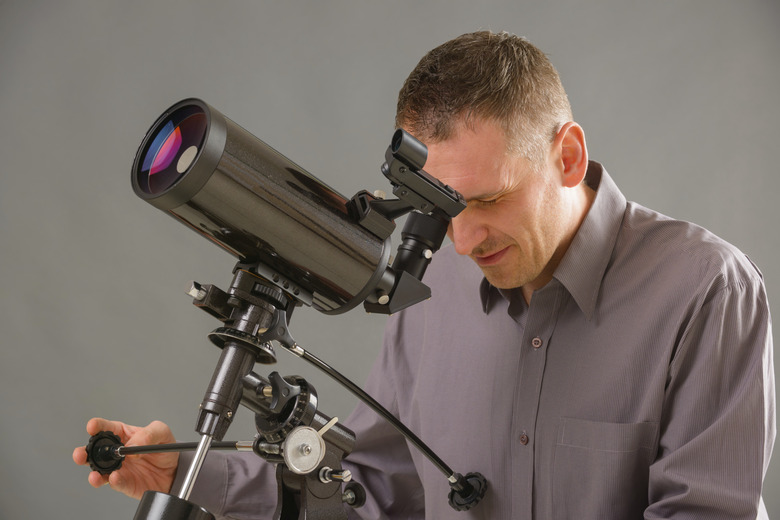Instruments Used By Astronomers
At one time, all people had to gaze upon the heavens was their naked eyes. The marvels this process revealed were plentiful enough, but the introduction of Galileo's telescope in the early 17th century marked a great and ever-progressing technological leap forward in humankind's exploration of the heavens. Today, a variety of optical and non-optical instruments continue to expand our understanding and appreciation of the cosmos.
Optical Telescopes
Optical Telescopes
The now-indispensable optical telescope instrument was pioneered by Galileo Galilei in 1609, although others had created similar tools by then. He used his "three-powered spyglass" to discover the four main moons of Jupiter as well as numerous previously unknown features of the moon. Over the centuries, telescopes evolved from simple hand-held objects to mounted beasts on mountain-top observatories and finally to telescopes orbiting the earth in outer space, which introduced the advantage of eliminating atmospheric distortion of the visual field. Today's telescopes are capable of seeing almost to the edge of the known universe, giving humanity a glimpse back in time many billions of years.
Radio Telescopes
Radio Telescopes
In contrast to conventional telescopes, radio telescopes detect and assess celestial objects using not the light waves they emit but their radio waves. Rather than being tubular, these telescopes are built in the form of parabolic dishes, and are often arranged in arrays. Only as a result of these telescopes have objects such as pulsars and quasars have become a part of the astronomical lexicon. While visible objects such as stars and galaxies emit radio waves as well as light waves, others can only be detected by radio telescopes.
Spectroscopes
Spectroscopes
Spectroscopy is the study of different wavelengths of light. Many of these wavelengths are visible to the human eye as distinct colors; a prism, for example, separates plain light into different spectra. The introduction of spectroscopy into astronomy gave birth to the science of astrophysics, for it allows for an exhaustive analysis of objects such as stars, which mere visualization does not. For example, astronomers can now place stars into different stellar classes based on their distinct spectra. Each chemical element has its own "signature" spectral pattern, so it's possible to analyze the composition of a star from many thousands of light-years away provided astronomers can collect its light.
Star Charts
Star Charts
Without telescopes, binoculars and other instruments of observation, star charts would not exist as they do today. But star charts, in addition to serving as guides to the sky for astronomers and mere astronomy buffs, have served as important tools in non-astronomical areas of life, such as nautical navigation. The Internet and other modern media have made star charts — many of them interactive — all but ubiquitous. But star charts have been around in some form for many millennia. Indeed, in 1979, archaeologists discovered an ivory tablet dated at over 32,500 years old and believed to depict, among other things, the constellation Orion.
Cite This Article
MLA
Crystal, Mike. "Instruments Used By Astronomers" sciencing.com, https://www.sciencing.com/instruments-used-astronomers-6366902/. 24 April 2017.
APA
Crystal, Mike. (2017, April 24). Instruments Used By Astronomers. sciencing.com. Retrieved from https://www.sciencing.com/instruments-used-astronomers-6366902/
Chicago
Crystal, Mike. Instruments Used By Astronomers last modified August 30, 2022. https://www.sciencing.com/instruments-used-astronomers-6366902/
